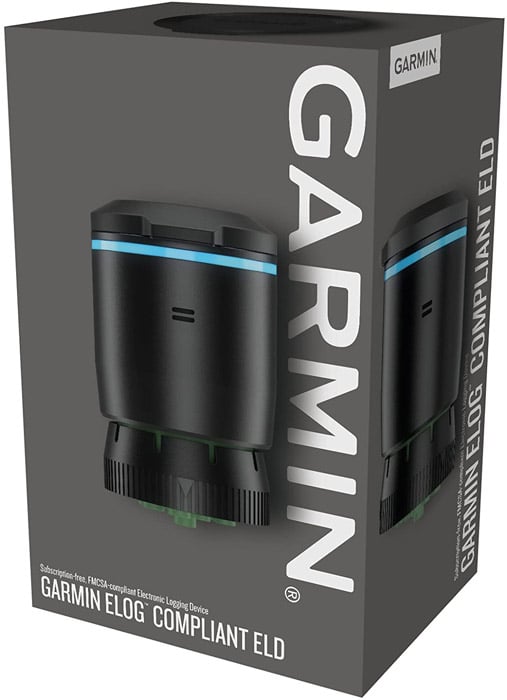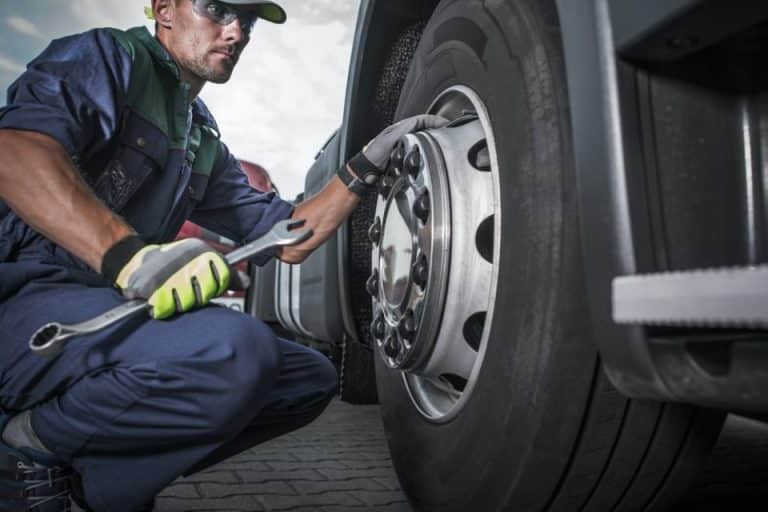ELD in trucking is 100% mandatory in the United States for anyone who operates a commercial bus or truck. If you’re transitioning to an owner-operator or just want to learn more about requirements that fleets need to meet, this guide will help.
What is ELD?
ELDs, or electronic logging devices, are part of the ELD mandate (more on that below) and will record vital information for commercial motor vehicles, such as:
- Hours of Service
- Miles driven
- Movement
- Engine data
Additionally, dispatchers and drivers have access to a wealth of information, such as inspections, planning and compliance data. ELD devices can connect to mobile apps and fleet management software to help fleets operate more efficiently.
How ELD Devices Work
An ELD in trucking integrates with the vehicle’s engine directly, so it’s able to gather numerous data points, such as:
- Engine/driver hours
- Location
- Ignition status
- Date
- Time
- Mileage
- Motor carrier
- Driver identification
- Vehicle
The devices will send all of the engine data back to dispatch using telematics. GPS data is also transmitted to the server to allow fleets to know where trucks are located at all times. Duty Status logs are generated through the ELD and updated continuously so that they can be viewed through a mobile app.
Mobile apps sync with fleet management software, allowing fleet managers to monitor and analyze all compliance.
On the app, drivers and managers can view messages, inspections, driver names, truck identification and other information.
Electronic Logging Device Requirements in Trucking
Most commercial vehicles must have ELDs to meet federal compliance. However, there are some exceptions to the rule. For example, current laws require you to have an ELD if a person has eight or more days of duty status logs.
If you have less than this number of logs, you won’t need to have an ELD device.
However, there are additional exemptions for Record of Duty Status (RODS), including:
- Less than 8 RODS in a 30-day period
- Vehicles made before the year 2000
- Driveaway-towaway drivers
Fleets must ensure that they’re in compliance with recent FMCSA evolutions.
Key features that every ELD must have include:
- Registration with the FMCSA
- Manufacturer certification
- Meet set technical requirements
You’ll often find ELDs that come packaged and preloaded, or you can use your own device. Some larger fleets opt to use their own devices so that they meet their existing software and hardware requirements.
Some of the features that are required of each ELD to meet certification requirements are:
- Synchronization with the engine control module
- Driving time and detail recording
- Electronic data transfer
- Audio controls
- Ability to print or show safety reports
- Tamper prevention
- Driver record certification
- Record location data
All ELDs must be the requirements set by the FMCSA to be properly certified.
Benefits of ELD Trucking Mandates
The word “mandate” has a lot of negative connotations because no one wants to be forced to do more than necessary. However, ELDs make a lot of sense in the trucking industry and can be very beneficial, too.
A few of the key benefits of ELDS that go beyond compliance include:
#1 – Safety
One of the key and most important benefits of electronic logging devices is that they’re designed to save lives. The FMCSA reported in 2015 that the introduction of these devices had the annual potential to:
- Save 26 lives
- Prevent over 500 injuries
GPS tracking and identification of bad driving habits can help fleets and truckers remain safe. Data sent back to dispatch is vast, and fleets can learn which drivers are driving erratically on the road and even driving fatigued.
Fault codes for trucks can also be monitored, allowing for rapid response to critical safety issues.
#2 – Reduce Liability Risks
Accidents can and do happen daily. The data recorded through the ELD can be used as proof in a lawsuit to prove innocence. For example, the ELD will have information on:
- Speed
- Cornering
- Braking
- Etc.
Lawyers may also request proof that the vehicle in question was properly maintained and should have been allowed on the road. Through your logs, you can show all of this data and information as proof of remaining compliant and of appropriate driving behavior at the time of the accident.
#3 – Truck Diagnostics
Vehicle diagnostics is one of the benefits of ELDs that are easily overlooked. However, the engine can send fault codes to the ELD along with:
- Real-time alerts
- Detailed vehicle reports
Fleets and owners can also look through reports and historical data to find recurring issues with a rig to uncover hidden problems. On an entire fleet basis, the reports also help you create preventative maintenance schedules to keep rigs running smoothly.
How Long Do I Have to Become ELD Compliant?
The ELD mandate went into effect in 2015, so if you’re a trucker in the US, you must be compliant already. However, Canada was a little later with their ELD mandate and their laws went into effect in 2021.
Full compliance in the US went into effect in December 2019 because the FMCSA understood it would take some time for fleets to become compliant.
What is E Log?
E Log is the same as ELD and is a common name associated with electronic logging devices.
Is an AOBRD the Same as an ELD?
No. AOBRD is an automatic onboard recording device. These devices were first introduced in 1988 and will record duty status and synchronization with the vehicle’s internal components. However, an AOBRD doesn’t provide the advanced functionality and features needed to meet the requirements of ELDs.
So, while similar, an ELD is not the same thing as an AOBRD.
What Happens to ELDs that Run on 3G?
ELD in trucking started before 5G and even the expansion of 4G to its current state. In fact, some older devices still run on 3G networks. Due to the low usage of the 3G band, ELD devices don’t have any issue with transmitting data back to fleet management software.
However, 3G is becoming obsolete and being phased out by mobile carriers.
In fact, 3G has already been phased out by:
- AT&T
- Sprint
T-Mobile and Verizon will be decommissioning all of their 3G capabilities by the end of 2022. Many other carriers, including Boost and Cricket, use the networks of these bigger providers, meaning that they’ll also lose their ability to use 3G.
ELDs that rely on 3G for connectivity will register a malfunction.
Under current requirements, if a malfunction occurs, the carrier has eight days to rectify the issue. You may be able to file for an extension and have additional time to upgrade to a new ELD device. However, you should do everything in your power to replace the older device immediately.
Fleets or truckers who are unsure of what mobile network their device relies on should call their ELD provider to verify whether the device requires 3G.
If the device does require 3G to run properly, you can:
- Call the ELD provider and ask for an upgrade
- Call the ELD provider or find a new one for a replacement device
The FMCSA is already warning everyone in the industry that they need to replace their devices as soon as possible to avoid compliance issues.
Can an ELD Log be Edited?
Yes. Logs can be edited, but the reason for the edit must be provided. Authorized persons and the driver may edit log records under the following conditions:
- Edits must be certified as being accurate and submitted
- Original records must be maintained
So, if a trucker forgets to add in their lunch time in their log, they can edit the log to capture this Off Duty event. However, the data from the original log must be preserved so that the record can be viewed in its original entirety.
ELD in trucking is a necessity. The FMCSA states that these logs can save lives, and they do provide data for truckers and fleets to understand driving behavior and record proof of driving habits.
For more information https://www.fmcsa.dot.gov/hours-service/elds/electronic-logging-devices




